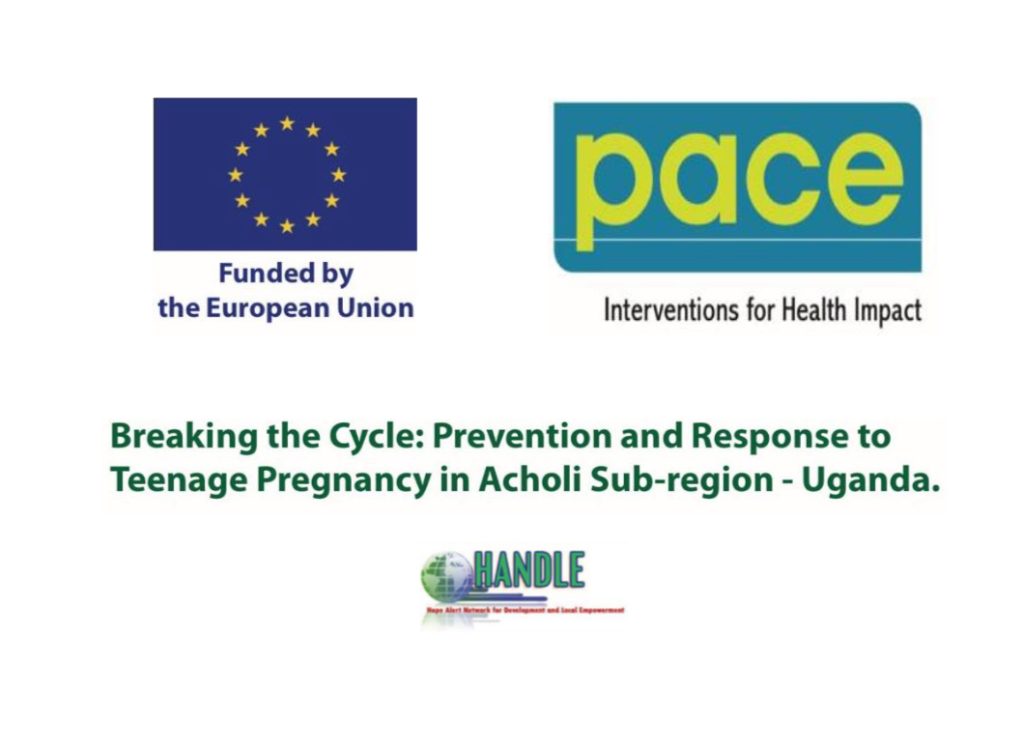
Teenage pregnancy remains a critical public health and development concern in Uganda, particularly in the Northern Region.
Despite various national efforts, significant policy and system-level barriers persist in existing sexuality education programs in Uganda’s schools and health systems.
Furthermore, gender norms, stigma, and limited paternal engagement continue to restrict open discussions between adolescents and other stakeholders on issues related to sexuality, reproductive health, and relationships.
Breaking the Cycle was designed in response to these challenges.
Breaking the Cycle: Prevention and Response to Teenage Pregnancy in Acholi Sub-region is a bold, multi-dimensional intervention designed to address teenage pregnancy and associated vulnerabilities in Northern Uganda. Led by PACE, in partnership with HANDLE Uganda, this transformative three-year initiative will be implemented in Gulu and Omoro districts, which report some of the highest rates of teenage pregnancy, poverty, and gender-based violence in the country.
PACE and its partners aim not only to reduce teenage pregnancy but to catalyze a paradigm shift, one where adolescent girls are protected, educated, and empowered to pursue their full potential in an enabling and inclusive environment.
The project focuses on two main objectives:
1. Increasing access to essential Sexual and Reproductive Health and Rights (SRHR) services for teenage girls, boys, and young mothers by enhancing community awareness and bolstering support structures.
2. Supporting the successful reintegration of adolescent girls into both mainstream education and alternative education pathways through tailored academic support, mentorship, and vocational training, alongside livelihood initiatives such as backyard gardening, entrepreneurship, and the formation of Village Savings and Loan Associations (VSLAs), empowering girls and young mothers to access essential resources and build sustainable incomes.
The project targets to reach over 330,000 vulnerable adolescent girls, women, youth and persons with disabilities, support 20,0000 individuals including women, adolescents (13-19) affected by child abuse, early marriage, poverty, exclusion, illness, GBV and teenage pregnancy and 2000 community structures including leaders, care givers, teachers, health workers, legal and psychosocial volunteers, police, grassroots CSOS, and SRHR service providers.
These partnerships will help create safe, inclusive, and supportive environments where adolescents can thrive and will be essential for achieving the goals of the Breaking the Cycle project.
